Ancient Great City Of Ani: Lost Capital Of The Kingdom Of Armenia And Its Mysterious Underground Tunnels
A. Sutherland - AncientPages.com - Armenia's splendid city of Ani was once a powerful and flourishing place situated on several trade routes.
Founded more than 1,600 years ago, it grew to become a walled city of more than 100,000 residents by the 11th century and became the rival of Constantinople, Baghdad, and Damascus.
Church of Saint Gregory (King Gagik), Ani, Turkey. Image credit: Ego - Public Domain
The ancient Ani was once the capital of a medieval Armenian kingdom that covered much of present-day Armenia and eastern Turkey.
Unfortunately, wars and hostile invasion forces put a definite end to its prosperity. The first settlement in Ani dates back to 3,000 BC, and its history was home to nearly two dozen civilizations.
Today, the remains of the lost capital of Armenia include forgotten ruins scattered over a vast area.
Remains of an ancient bridge below Ani photographed on June 19, 2011. Armenia is on the right, Turkey on the left. Credit: (CC BY SA Martin Lopatka)
Not long ago, Armenian archaeologists unearthed secret water channels, mysterious monk cells, meditation rooms, huge corridors, intricate tunnels, traps, and corners under the ruins of the ancient city.
Situated on several trade routes on the eastern border of Turkey, across the Akhurian River from Armenia, the ancient city of Ani was once called the "City of 1,001 Churches" or the "City of Forty Gates."
The location was one of the reasons why Ani and the surrounding region were conquered hundreds of times. Byzantine emperors, Ottoman Turks, Armenians, nomadic Kurds, Georgians, and Russians claimed and reclaimed the area, repeatedly attacking and chasing out residents.
Illustration of Ani, the capital city of the medieval Armenian kingdom of the Bagratuni dynasty (961 C.E.)
Ani was sacked by the Mongols in 1236. Ani never recovered from a devastating 1319 earthquake and, more significantly, from the shifting of regional trade routes. By the 1300s, Ani was in steep decline.
Renowned for its splendor and magnificence, Ani was abandoned by the 17th century, and largely forgotten in the sixteenth and seventeenth centuries.
It was rediscovered in the 19th century, and the city had a brief moment of fame. However, Ani was closed off by World War I.
 The Church of the Redeemer- Image credit: Ggia - CC BY-SA 3.0
The Church of the Redeemer- Image credit: Ggia - CC BY-SA 3.0
Shortly after World War I, Turkish officials ordered the obliteration of Ani's monuments, which were within Turkey's borders by then.
The ruins crumbled at the hands of many looters and vandals; fortunately, the Ani was not erased from history.
Archaeologists excavating in the region uncovered the secrets of "underground Ani." While digging at one of the underground tunnels in Ani, George Ivanovic Gurdjieff, who spent most of his childhood and youth in Kars, noticed that the soil became different.
He and his friend Pogosyan continued digging and discovered a narrow tunnel. But the end of the tunnel was closed off with stones. They cleaned the rocks and found a room with decayed furniture, broken pots, and pans.
They also found a scrap of parchment in a niche. As they continued digging, they stumbled upon a famous Mesopotamian school used in the sixth and seventh centuries.
 Ruins of the Mausoleum of the Child Princes in the Citadel in Ani, on April 19, 2011. Located in the Inner Fortress on Citadel Hill, this structure is thought to have been built around 1050 AD. (CC BY SA Georgios Giannopoulos
Ruins of the Mausoleum of the Child Princes in the Citadel in Ani, on April 19, 2011. Located in the Inner Fortress on Citadel Hill, this structure is thought to have been built around 1050 AD. (CC BY SA Georgios Giannopoulos
Another important discovery made by the digging archaeologists were secret tunnels beneath the ancient Ani city.
They also found letters written in ancient Armenian and belonging to monks.
The Alem village is home to 15 rock paintings that have never been examined and belong to humanity. Credits: AA Photos
As confirmed by Italian excavators in 1915, underground Ani had a school, a monastery, rock houses, monk cells, water channels, meditation rooms, and more than 500 meters (1,600 ft) of complex tunnels. At least 823 structures and caves have been identified in underground Ani.
The rock paintings will play a significant role in the ruins of Ani to be included in the UNESCO list in 2016. Credits: AA Photo
In a village located close to the ancient city of Ani, archaeologists also discovered fifteen interesting rock paintings. This ancient rock art depicts hunting scenes with horses, dogs, mountain goats, deer, and humans.
No doubt many more archaeological finds are still hidden beneath the ancient city of Ani. They remain yet to be unearthed. There are likely many more undiscovered underground structures that archaeologists will unearth in the future.
Written by – A. Sutherland - AncientPages.com Senior Staff Writer
Updated on December 21, 2022
Copyright © AncientPages.com All rights reserved. This material may not be published, broadcast, rewritten or redistributed in whole or part without the express written permission of AncientPages.com
More From Ancient Pages
-
 Study: Paleo-Americans Hunted Mastodons, Mammoths And Other Megafauna In Eastern North America 13,000 Years Ago
Archaeology | Jun 15, 2023
Study: Paleo-Americans Hunted Mastodons, Mammoths And Other Megafauna In Eastern North America 13,000 Years Ago
Archaeology | Jun 15, 2023 -
 Don’t Underestimate The Rishis – Ancient Sages Were ‘Probably Great Scientists’
News | Sep 26, 2015
Don’t Underestimate The Rishis – Ancient Sages Were ‘Probably Great Scientists’
News | Sep 26, 2015 -
 Ezekiel’s Secret Ancient Knowledge About Lost Worlds – Thought-Provoking Theory Examined
Featured Stories | May 3, 2019
Ezekiel’s Secret Ancient Knowledge About Lost Worlds – Thought-Provoking Theory Examined
Featured Stories | May 3, 2019 -
 Oldest Giant Dinosaur Species Discovered In Argentina
Archaeology | Jul 10, 2018
Oldest Giant Dinosaur Species Discovered In Argentina
Archaeology | Jul 10, 2018 -
 Mysterious Ancient Vanished Civilization With Unusual Physical Characteristics – Survivors Of The World’s First Race? – Part 1
Civilizations | Aug 17, 2020
Mysterious Ancient Vanished Civilization With Unusual Physical Characteristics – Survivors Of The World’s First Race? – Part 1
Civilizations | Aug 17, 2020 -
 Kussara – Ancient Lost City Of The Old Hittite Kingdom
Featured Stories | Jul 7, 2021
Kussara – Ancient Lost City Of The Old Hittite Kingdom
Featured Stories | Jul 7, 2021 -
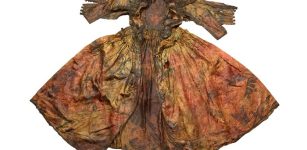 Unique 17th Century Silk Dress Found At Bottom Of The Wadden Sea Goes On Display
Artifacts | Jul 29, 2023
Unique 17th Century Silk Dress Found At Bottom Of The Wadden Sea Goes On Display
Artifacts | Jul 29, 2023 -
 Biskupin: A 2,700-Year-Old Defensive Settlement Of Lusatian Settlers In Poland
Civilizations | Apr 26, 2016
Biskupin: A 2,700-Year-Old Defensive Settlement Of Lusatian Settlers In Poland
Civilizations | Apr 26, 2016 -
 King Mithradates VI Of Pontus Used Poison To Avoid Death By Poison
Ancient History Facts | Mar 5, 2016
King Mithradates VI Of Pontus Used Poison To Avoid Death By Poison
Ancient History Facts | Mar 5, 2016 -
 Ask And Embla: First Human Pair Created By Powerful God Odin And His Two Brothers
Featured Stories | Sep 24, 2016
Ask And Embla: First Human Pair Created By Powerful God Odin And His Two Brothers
Featured Stories | Sep 24, 2016 -
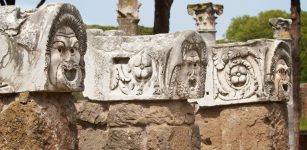 Ostia Antica – Unique Ancient Harbor City In The Suburbs Of Rome
Civilizations | Nov 29, 2018
Ostia Antica – Unique Ancient Harbor City In The Suburbs Of Rome
Civilizations | Nov 29, 2018 -
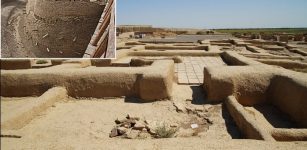 Climate Change, Not Genghis Khan Caused Demise Of Central Asia’s River Civilizations
Archaeology | Dec 17, 2020
Climate Change, Not Genghis Khan Caused Demise Of Central Asia’s River Civilizations
Archaeology | Dec 17, 2020 -
 Lipstick ‘Kiss Of Death’ – Its Old History And Tradition Among Women Around The World
Ancient Traditions And Customs | May 16, 2019
Lipstick ‘Kiss Of Death’ – Its Old History And Tradition Among Women Around The World
Ancient Traditions And Customs | May 16, 2019 -
 Lady Trieu: Fierce Warrior, Rebel, Freedom Fighter And National Hero In Vietnam
Featured Stories | Feb 26, 2019
Lady Trieu: Fierce Warrior, Rebel, Freedom Fighter And National Hero In Vietnam
Featured Stories | Feb 26, 2019 -
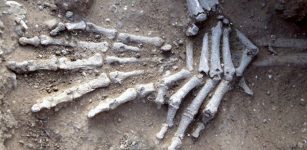 4,500-Year-Old Skeletons Found In SW China
Archaeology | Apr 19, 2016
4,500-Year-Old Skeletons Found In SW China
Archaeology | Apr 19, 2016 -
 Was The World’s Oldest Surviving Garden Created By Ancestors Of The Katzie First Nation 3,800 Years Ago In British Columbia?
Archaeology | Dec 27, 2016
Was The World’s Oldest Surviving Garden Created By Ancestors Of The Katzie First Nation 3,800 Years Ago In British Columbia?
Archaeology | Dec 27, 2016 -
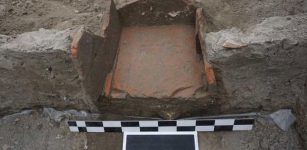 Ancient ‘Refrigerator’ And Unique Coins Discovered In Roman Military Camp In Bulgaria
Archaeology | Oct 3, 2022
Ancient ‘Refrigerator’ And Unique Coins Discovered In Roman Military Camp In Bulgaria
Archaeology | Oct 3, 2022 -
 Why Are There No Unicorn Fossils In A Museum?
Archaeology | Mar 17, 2023
Why Are There No Unicorn Fossils In A Museum?
Archaeology | Mar 17, 2023 -
 Who Deceived Mighty Yuku God Of Rain And Thunder In Beliefs Of Yaquis Of Southern Arizona And Sonora, Mexico?
Native American Mythology | Dec 21, 2023
Who Deceived Mighty Yuku God Of Rain And Thunder In Beliefs Of Yaquis Of Southern Arizona And Sonora, Mexico?
Native American Mythology | Dec 21, 2023 -
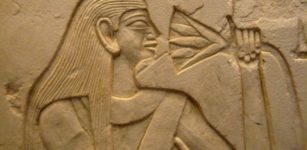 Nefertum – God Of Lotus Blossom, Perfumes, Aromatherapy, Beauty In Egyptian Mythology
Egyptian Mythology | Apr 17, 2021
Nefertum – God Of Lotus Blossom, Perfumes, Aromatherapy, Beauty In Egyptian Mythology
Egyptian Mythology | Apr 17, 2021






